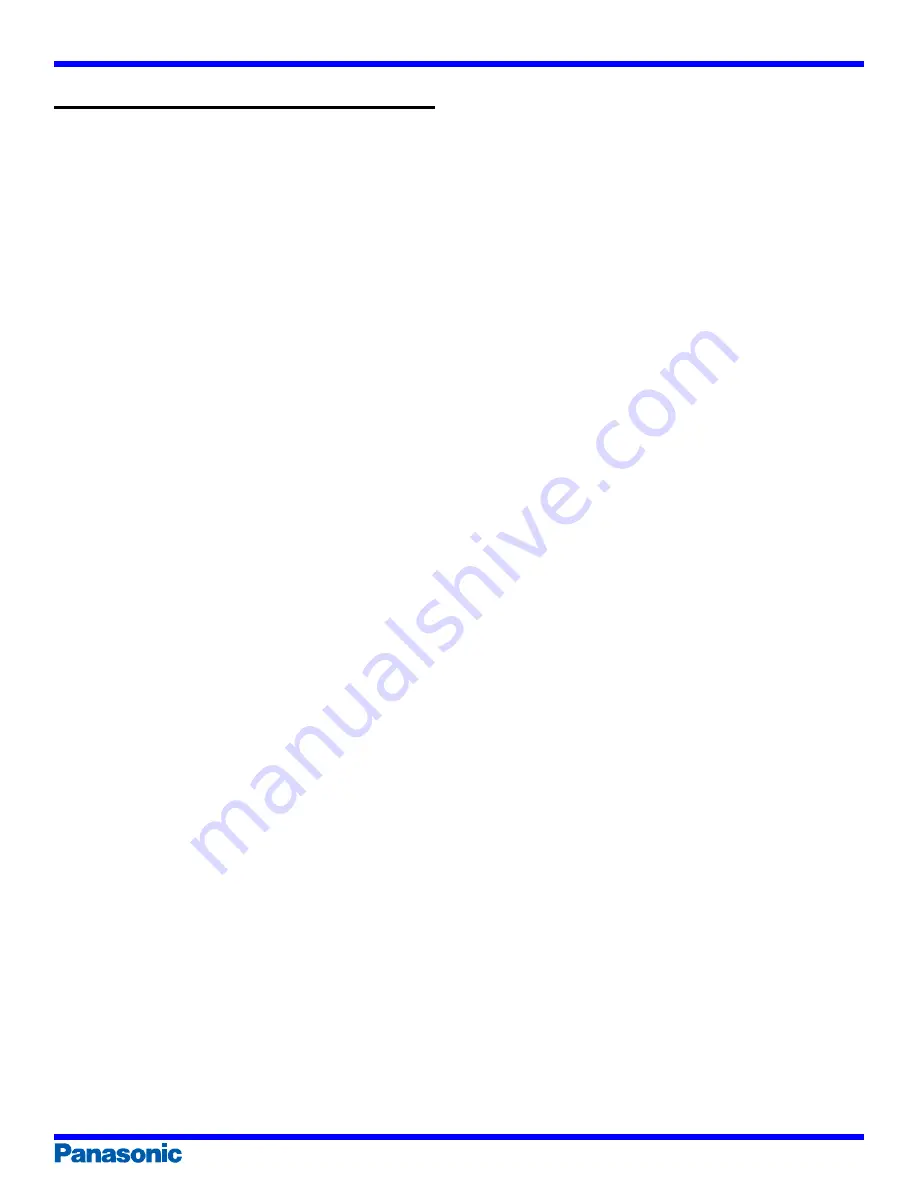
VRLA BATTERIES
AUGUST 2003
This information is generally descriptive only and is not intended to make or imply any representation, guarantee or warranty with respect to any cells and batteries. Cell and battery designs/specifications are subject
to modification without notice. Contact Panasonic for the latest information.
PRECAUTIONS FOR HANDLING VALVE-REGULATED LEAD-ACID BATTERIES-
CONT.
5. Method of use
DANGER
(1) The batteries must be charged using the
specified charger or by maintaining the charging
conditions indicated by Panasonic. If the
batteries are charged under conditions other
than those specified by Panasonic, they may
leak, ignite or explode.
(2) Do not connect the (+) and (-) terminals of the
battery to each other with a metallic material
such as wire; do not allow tools such as pipe
wrenches and wrenches to touch points of
different voltages on the battery; and do not
bring metallic necklaces or hair pins into contact
with the battery or store them together with the
battery. Failure to observe these precautions
may cause the battery to overheat, emit hydro
gen gas, leak, ignite, or burst.
WARNING
(1) Do not throw the battery in fire nor heat the
battery. The battery may burst or generate a
toxic gas if placed in contact with fire.
(2) Do not attempt to disassemble, remodel or
destroy the battery, as it may cause battery
leakage, fire or bursting, and could also create
sulfuric acid spills from the battery resulting in
possible burns to personnel and damage to the
immediate environment.
CAUTION
(1) Check the battery for any sign of irregularities in
appearance. If there is any damage to the
battery case/cover such as cracks, deformation
or leakage, replace the battery with a new one. If
the battery appears dirty or dusty, clean it. If a
battery of irregular appearance continues to be
used, decrease of capacity, leakage of
electricity, fumes, ignition or other problems
may result.
(2) If any irregularity is found in areas such as the
charge voltage and discharge characteristics of
the battery, replace it.
(3) For safety, make sure to observe the following:
Otherwise, leakage, ignition or an explosion of the
battery may occur.
1)
Do not charge the battery with its (+) and (-)
terminals and the (+) and (-) terminals of the
charger connected in reverse.
2)
Do not apply a solder directly to the battery
terminals. If direct soldering is unavoidable,
please contact Panasonic in advance.
3)
Avoid mixed usage of batteries differing in type,
manufacturer or history of use.
4)
Do not remove or damage the outer case of
the battery.
5)
Do not apply strong shocks or jolts to the
battery.
(4) Do not continue to charge the battery beyond the
time specified in the instructions of use of the
charger. If the battery is not fully charged even after
being charged for a longer time than specified,
discontinue charging and remove the battery from
the charger. Charging for a longer time than
specified may cause the battery to leak, ignite or
burst.
(5) Do not discharge the batteries beyond the
maximum values indicated in the specifications. If
the batteries are discharged beyond the maximum
values, they may leak, ignite or explode.
(6) Children should only use the battery under the
guidance of an adult who should thoroughly
instruct the child on its use. During use the adult
should check that the battery is used exactly as
instructed.
Keep the battery beyond the reach of small children.
During charging or actual use of the battery, take
caution not to allow small children to remove the
battery from equipment.
PROPOSITION 65 WARNING
Battery posts, terminals, and related accessories
contain lead and lead compounds, chemicals known to
the State of California to cause cancer and
reproductive harm. Wash hands after handling.



























